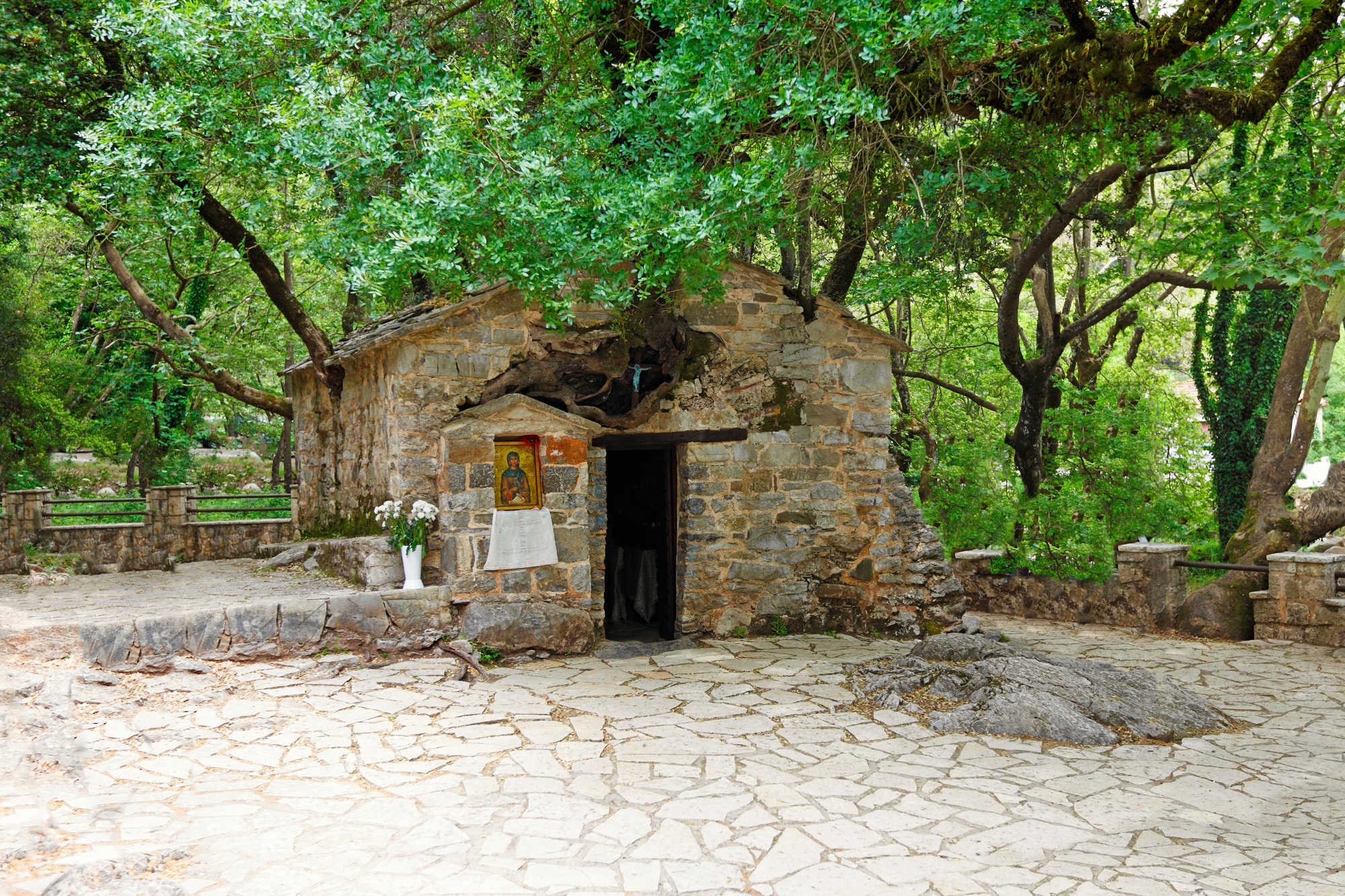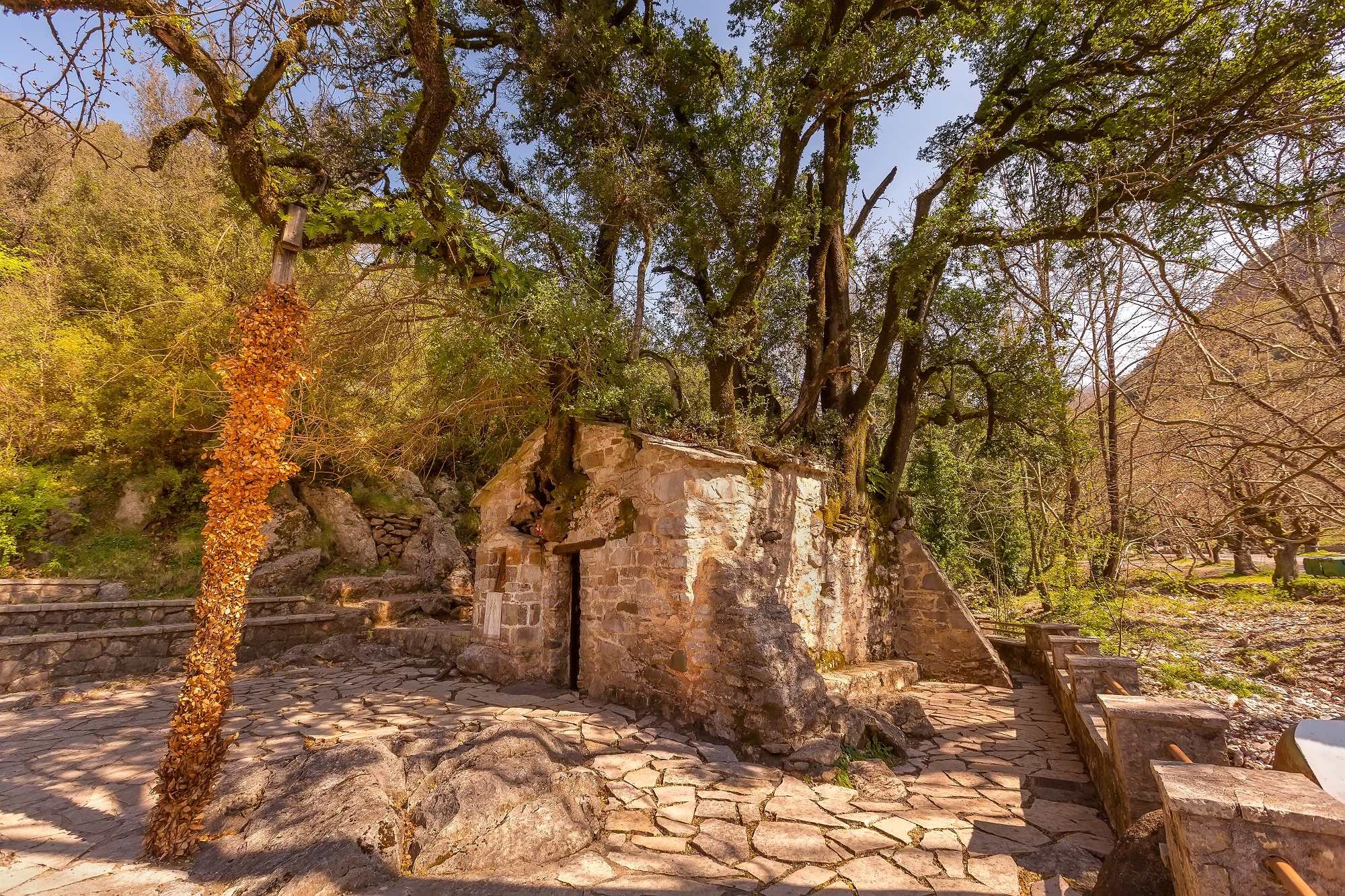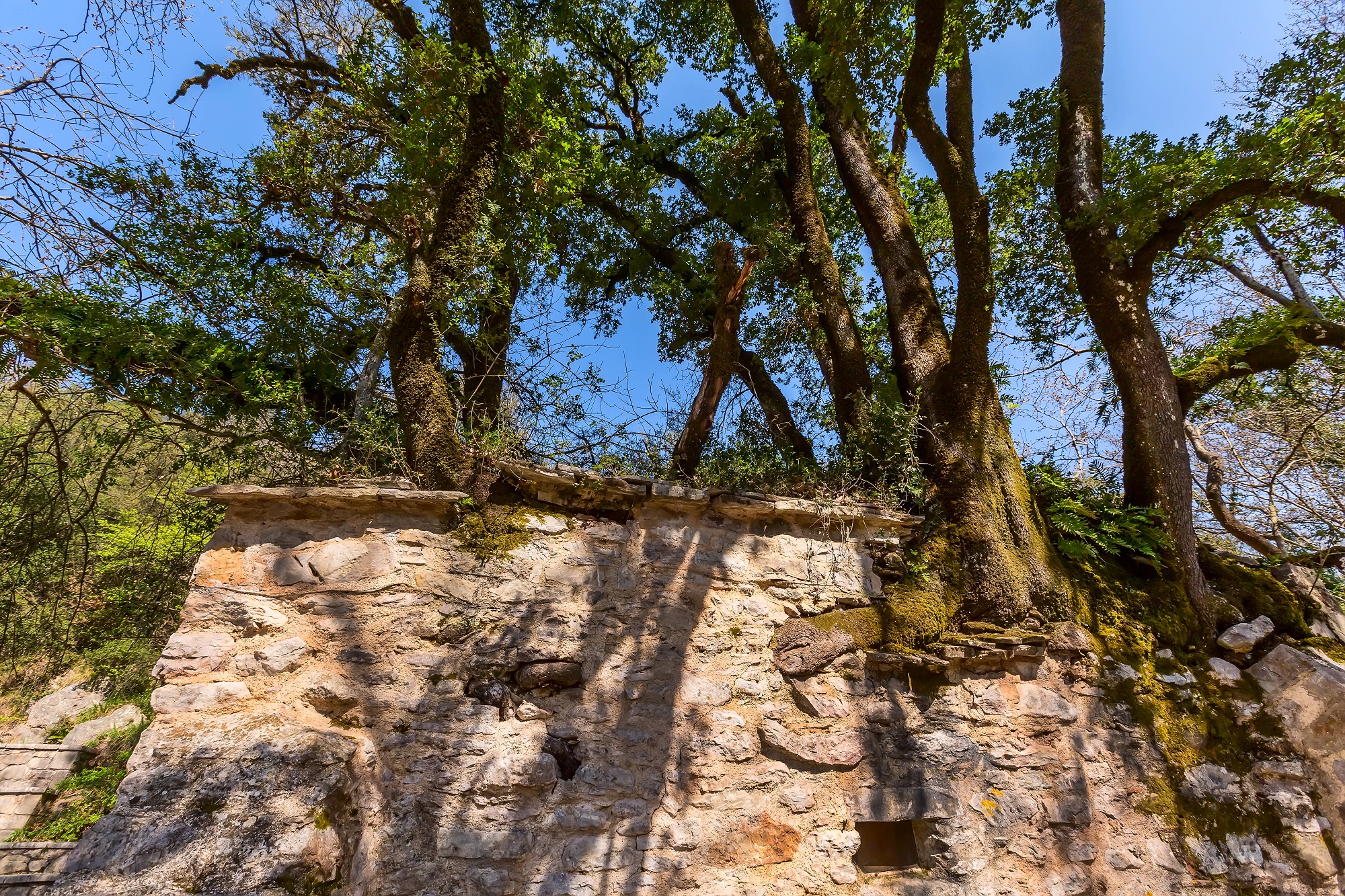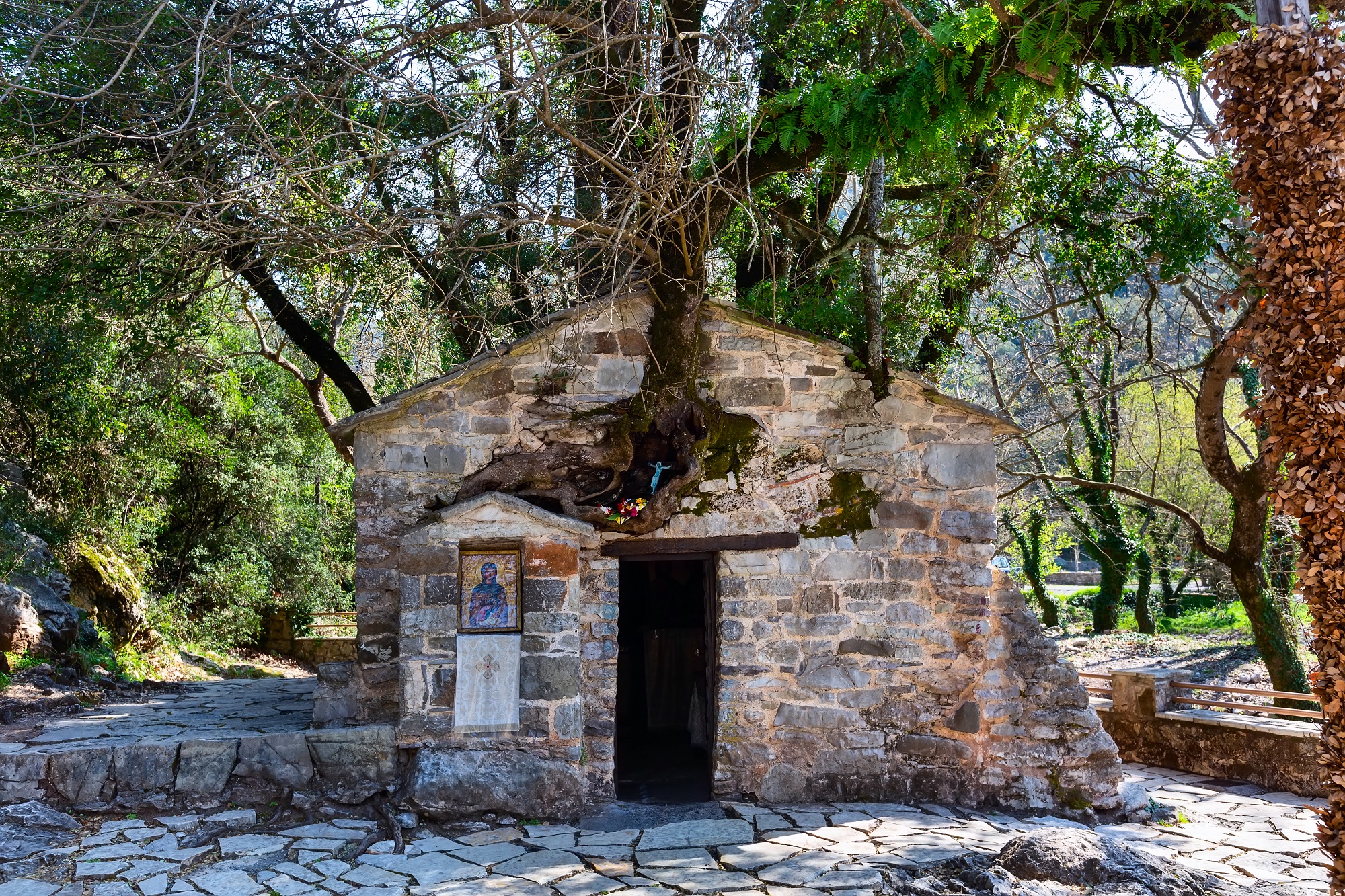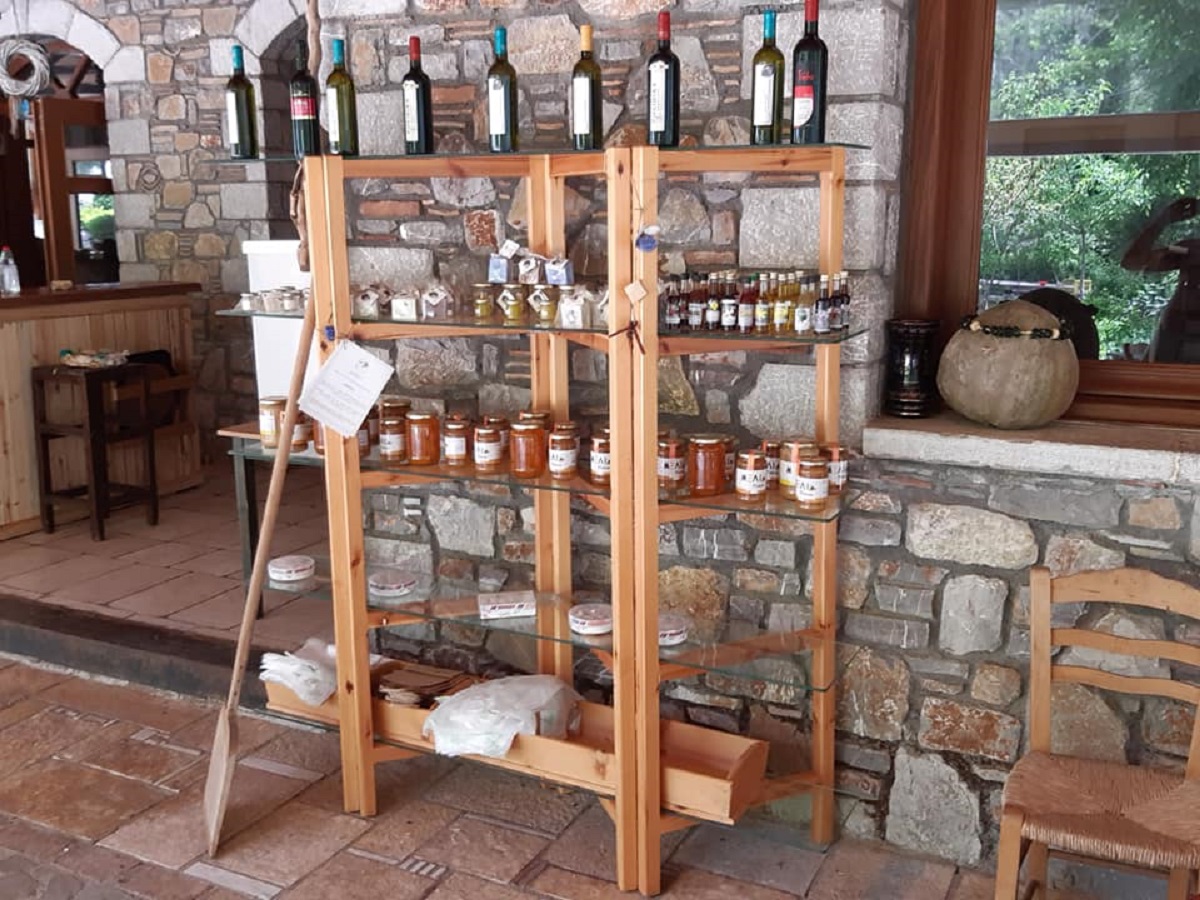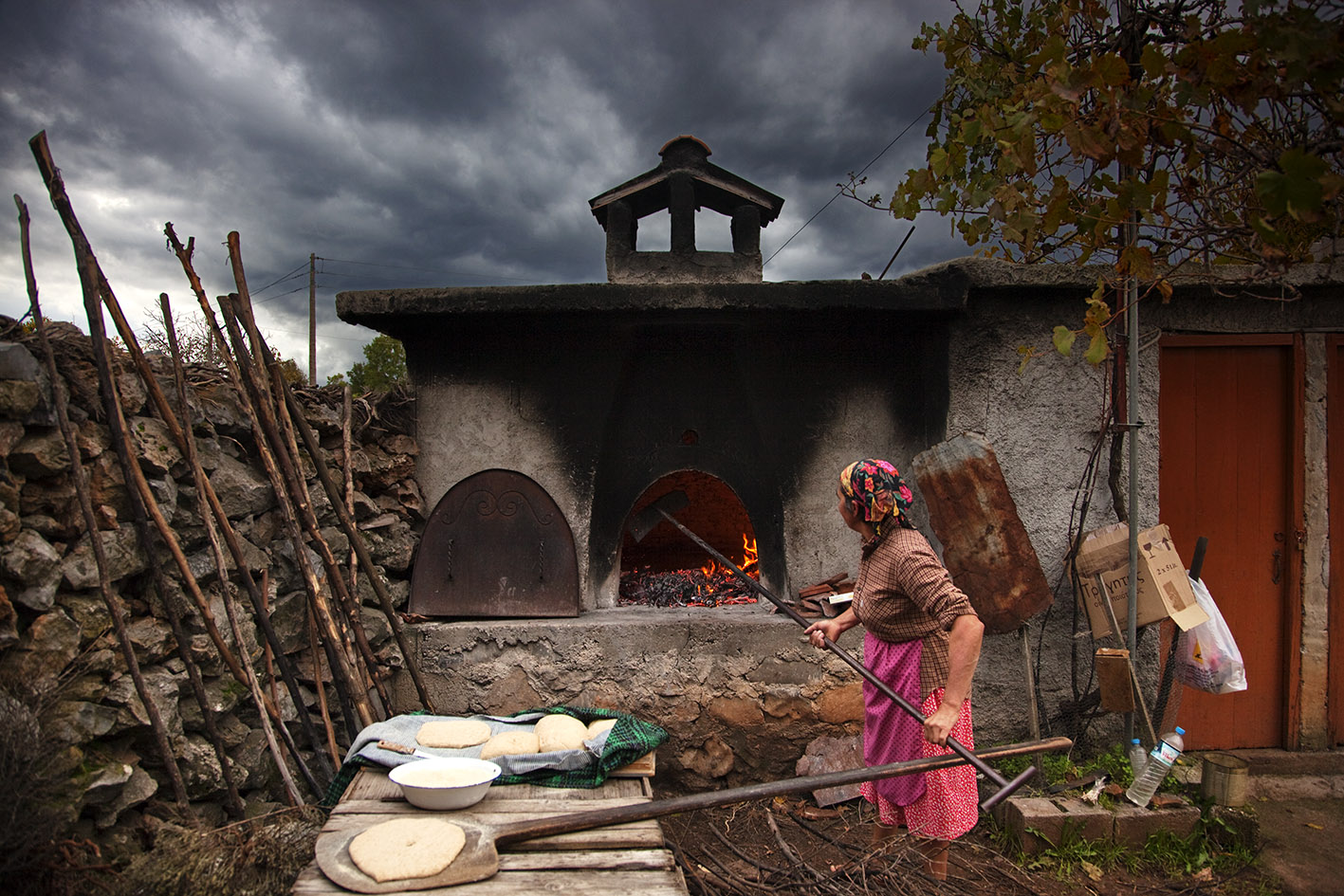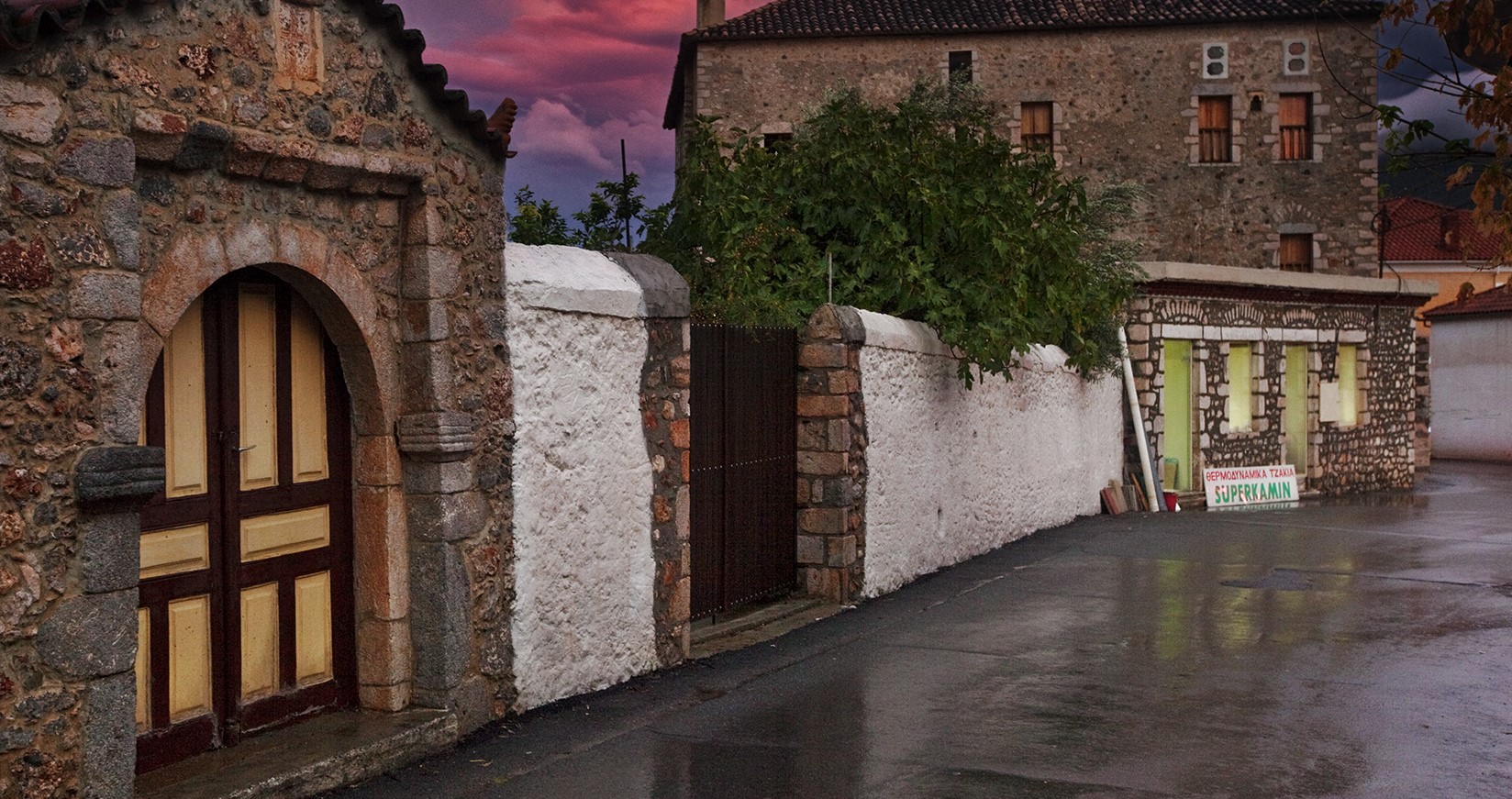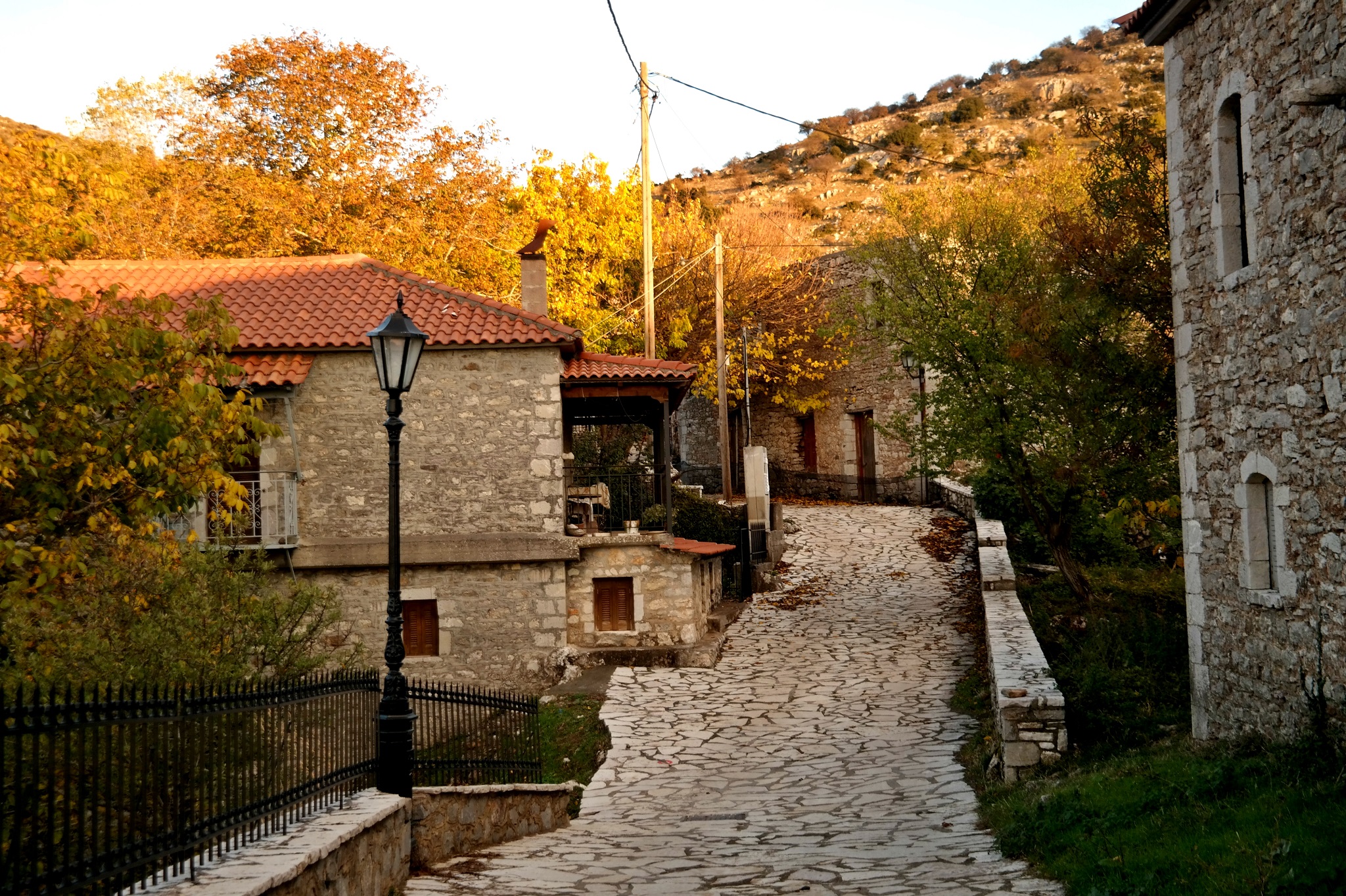Vasta is located at 860 m altitude on the south slopes of Lykeo mountain, on the borders of Arcadia and Messenia. According to the 2011 census, it has 62 residents. The nearest town is Megalopoli (about 26 km away) which is how most visitors approach the village. There are also other routes for people coming from southern Peloponnese, or from Kalamata (take the exit Paradisia off the road that leads to Megalopoli), or from Diavolitsi.
The origins of Vasta are lost in time. It has not been determined when it was first founded, but it appears to be a Byzantine village. The first mention of the place has been found in Venetian census records of the Peloponnese in 1700 – where it is mentioned with the name Basta. This name seems to derive from the French word “bastion”, which may reflect the impression the village’s naturally inaccessible and fortified location made on the Franks of the Principality of Achaea. Even during the time of the Greek War of Independence, the residents were known as “Basteoi” and they were famous for their bravery, since they had already revolted against the Turkish twice until then, getting their houses regularly torched.
Vasta on the Guinness Record list
In contrast to many other locations of mountainous Arcadia that have become popular destinations in recent years (for example, Isaris is nearby), Vasta does not have any tourist infrastructure. However, it does attract many visitors – especially when the weather improves and nature is in bloom – due to the small chapel of Agia Theodora, that was included in the Guinness Record book as a “wondrous temple”, becoming world-famous as one of the strangest chapels in the world.
What makes Agia Theodora so strange and wondrous is that, even though it is a small stone chapel, it has 17 oak trees coming out of its roof. Their roots are nowhere to be seen: the visitor only sees trunks and branches.
As is natural, this unique sight has managed to bring together folk and religious tradition. The stories told about it are many, but one of the most popular among them is that of Theodora, daughter of a poor and religious family, during the times when the village had to contribute to the Venetian protective defence system.
As her father was sick, Theodora, disguised as a man, joined the army at 17 and became a distinguished soldier. Due to her brave deeds, another young woman fell in love with her, and decided to take her revenge for the many rejections, by accusing the soldier of having deflowered her. The result was for Theodora to be sentenced to death – with the execution taking place in the location where the chapel is today. With her dying breath, she asked God for her years to become trees and her blood to become the water that would water them. So, according to tradition, the 17 oak trees (like the 17 years of Theodora) are a divine miracle, as is the water that springs from the temple’s foundations, creating a rushing stream that joins the river Haradros.
The chapel of Agia Theodora in Vasta has been the subject of scientific research, thanks to which it has been possible to determine that it was probably built in the Byzantine times – meaning before 1205, and earlier than the rest of the village. In fact, due to the pressure that the trees put to the structure many repairs have been necessary, and since they were not always done by professionals, the original architecture has been affected significantly. Using a ground penetrating radar, specialists from the University of Patras were able to see that the roots go through the gaps on the side walls, reaching the ground. So, they add support to the chapel, while at the same time damaging its walls that need to be restored.
So, according to science, the original church was built at a place with a high soil content, where a kermes oak grew originally. From its seeds, more kermes oaks grew on its roof, then maple trees, then terebinths, and finally the 17 oaks that create the current impressive sight, which is completed by the thick oak forest surrounding the chapel and the idyllic creek around its foundations with the stream that joins Haradros river.
Where to go for food or coffee when you’re in Vasta
There might not be any accommodation facilities in Vasta, but there are places for a coffee or food for those who come to see Agia Theodora’s chapel, completing the excursion in Arcadia in the spring (or the summer).
Even though the chapel is outside Vasta (you get there on the Sirtzi-Megalopoli country road) it’s worth visiting the village and sitting at the wine-café-grocery store of Tzikos.
The shop has its own history since it’s been open since 1913. In fact, the infamous bandit Karabelas is involved in its history, since, according to a folk song, he was a sworn enemy of Andrikos “Tzikos” Papandreou, the founder of the store. In the past the coffee shop was also a post office, a doctor’s office, and later a phone centre, during a time when there were only two telephones in Vasta (the other one was in the community office). Of course, the building has not remained the same since 1913, since it was damaged in the 1966 earthquake, and was rebuilt in the same site in 1974.
In the area of Agia Theodora, there are two great choices for food, ‘Kipos tis Agias” and “Neromilos tou Nikola”.
“Kipos tis Agias” is very close to the chapel and first opened in 2013. They open early in the morning and close late in the afternoon. Ask for the day’s special and try the sourdough bread, the homemade pies and desserts.
“Neromilos tou Nikola” combines a restaurant with a traditional mill. The mill has been in the area already since the 19th century. It first opened as a traditional tavern in 1986 and it stays open in the winter, with tables spread around the lovely fireplace. Many of the ingredients are sourced from the owner’s vegetable garden and farm, while they prepare the food in a wood burning oven, like was the usual in the past. You can enjoy local rabbit stew or rabbit with olive and oregano, goat in tomato sauce, country rooster and delicious baked lamb.
Read also:
Panta Vrehei: Miracle of Evrytania region’s wild nature with waterfalls
Signora Trattoria: A brand new restaurant serving authentic Italian flavours in Thessaloniki
Easter in Corfu, and 3 more reasons to fall for this beautiful island of the Ionian sea



